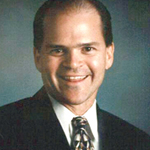Child Development: Vision Is Learned Skill
As adults, we take our eyesight for granted. We forget that we once had to learn how to see.
It may seem automatic, but if the visual system does not develop correctly, serious problems can occur.
“Vision is a learned process,” said Dr. Rick Graebe, an optometrist and Vision Therapist in Versailles.
“If vision is learned properly, life is easier. If it is learned improperly, life is harder.”
Most parents know the basics when it comes to infants and vision — they can see shapes and high contrast.
That’s why the mobiles hanging over a baby’s crib feature black, white or red colors.
But because motor skills drive vision in babies, parents can overlook the importance of letting their children have time to crawl around to discover things around them.
“Bucket babies” – children stuck in car seats or who are not given enough wiggle time – can suffer delays in motor skills, which carry over to under-devel-oped vision skills.
If you want to learn more about vision development, you can attend a free workshop with Dr. Graebe at his office on June 14, 6:45-7:45 p.m.
To develop vision skills, children discover the world by reaching, touching and grasping objects.
At first, children learn where they are in space through movement.
Then they learn where objects are in space in a kind of trial and error reaching and grabbing process.
As the visual system develops, it then takes over and drives movement.
At this point, children can determine distance, hardness and texture of objects by seeing them.
Eventually, they can read a book and picture everything described.
By the age of 3, vision is a child’s primary sense.
That’s why an eye exam at this age is crucial to determine that a child’s eyes are moving correctly and in tandem.
Only a board certified developmental optometrist can make that determination.
“Regular optometrists will test for gross anatomical issues only,” Dr. Graebe said.
What could be missed are the beginning stages of amblyopia or lazy eye — the leading cause of legal blindness for children.
“We can treat that with lenses or with exercises,” Dr. Graebe said.
“Either way, amblyopia is 100% controllable when caught early and treated properly.”

